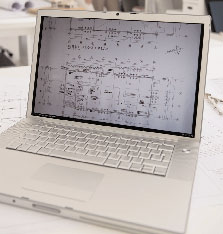
By Michael Coleman
Published in the June 2011 issue of Today’s Facility Manager
Virtually all aspects of facility management (FM) have become data intensive. The amount of facility data compared to just 10 years ago has increased exponentially. There is more to know, a greater need to know, more urgency to know, and an increased expectation from customers that facility managers (fms) will know it.
The first key to successful management of facility information is to assess the existing data. Fms need to recognize the strategic value of the data already available and then convey that value to top management by demonstrating that these data support their core business.
Optimizing the value of facility data effectively requires integrating FM information systems. Some organizations tend to divide facility information into separate, incompatible systems purchased without regard for potential compatibility. Arranging information in such a stovepipe design degrades its value, because it precludes easy integration of data from different sources. Such action also encourages senior management to ask questions that address only part of any issue. This lack of integration can frustrate senior managers, especially because FM is naturally so integrative.
CAFM (computer aided facilities management) systems actually comprise a family of interrelated but distinct systems that automate each major aspect of facility information management: design, furniture and equipment, building operations, work management, project management, real estate and leasing, and strategic/long-range planning. Fms can get more value out of CAFM systems by making them truly integrated rather than merely amassing a large family of separate systems.
CAFM systems cover a wide range of products, and the following information describes the most common types of systems and related CAFM issues.
A space planning system is essentially a CAD (computer aided design) system. A good CAD package will provide the ability to associate multiple drawings with one another and to track drawing elements not only by how they look but also by assigning “intelligence” (for example, inventory data) to them.
To apply a drawing to a space management plan will require the additional ability of assigning intelligence to the graphic elements and linking those elements to the fm’s database.
The space planning system can also be important to other applications. It can interface directly with them and exchange such data as furniture and equipment, property management, building operations, project management, and strategic facility planning. The space planning system can also operate in parallel with other applications, such as security management, telecommunications and cable management, and disaster recovery by attaching floor plans when needed.
A space management system is essentially a database application that imports square footage numbers from the CAD system (departmental space assignments, for instance), houses them in a database, and produces alphanumeric reports such as departmental space allocations and analyses of space utilization efficiency. This direct interface is an efficient way of ensuring accurate numbers in the space management database and avoiding errors that can result from manually typing numbers into a space management system.
The accuracy of such systems is especially evident if space rent and operating costs are allocated to individual departments on the basis of area occupied. Space management systems can also be set up to compute the data needed to implement an area based chargeback system.
Furniture and equipment (F&E) systems store electronic furniture symbol libraries with attributes such as size, finish, cost, and item number that enable fms to select and place symbols on plans, generate an inventory take off, and even purchase orders.
If the F&E system is tied to an inventory/asset management system, the fm can determine whether the warehouse currently stocks all the components needed for an upcoming project, for example. Once furniture is installed, it may need to be tracked. Tracking can be useful when developing inventory lists for movers or designers or when determining what is missing from one year to the next. A bar code or some other identifier with a unique code is often attached to each piece of furniture (or equipment).
Using bar codes can improve efficiency by tracking pieces or even parts of equipment. This practice also provides a maintenance record history if a date attribute is attached to each asset and the records are tracked and sorted in a database.
Property and lease management systems track data about buildings and land, but not about who is occupying them, which is considered space management. Building data that can be tracked include ownership and building status, key dates, valuation and cost, and physical properties such as the number of floors, the number of parking spaces, the type of structure, the types of utilities, and so forth.
Lease system data fields often include items such as rent, key dates, services, taxes, and insurance. More sophisticated packages provide tickler files to warn of approaching option or expiration dates. These packages also contain the ability to generate letters and notices, the ability to maintain standard lease clauses, and the tools to enable comparison of the pros and cons of potential leases under evaluation. Some packages also include general ledger and accounts payable modules that can interface with corporate accounting systems. These are useful when tracking operating expenses and doing cash flow and budget projections.
Building operations and maintenance management systems monitor and report problems by location as well as track and regulate the operation of building mechanical equipment according to predetermined criteria. This type of system can also help establish and track work orders for corrective and preventive maintenance for the equipment, the facilities, and the architectural elements within buildings. Custodial and grounds maintenance work is also included.
Maintenance systems focus on repetitive tasks such as replacing filters on a regular basis. These systems are designed to track items such as:
- condition of equipment;
- cycles for repetitive work (daily or weekly);
- the number and types of equipment and how they are scheduled for maintenance;
- staff, including scheduling and skills;
- reports; and
- spare and replacement parts, including what parts must accompany routine maintenance tasks.
Building operations maintenance management systems are generally time intensive to set up. Therefore, many departments subcontract the initial input, then run the system themselves; others subcontract the entire process, performing only the maintenance tasks.
Work management systems provide a higher level of control for multifaceted work, as opposed to operations systems. For example, they can generate several work orders and then assign them to one project. These systems enable fms to track the status of either an individual work order or a whole project. This capability is useful for projects that involve several work orders and multiple trades: for example, the construction of a wall could involve a carpenter, an electrician, and a painter.
Work management systems become more effective if they are linked to a corporate financial management system. All work, even that scheduled through an automated building operations system, should be run through the work management system to track costs of facility operations accurately. These costs, in turn, can be downloaded to the financial management system to provide realistic, accurate cost tracking and tenant charges.
Without these links, many facility departments keep two separate sets of books: one for work management and another for the corporate accounting department. This situation creates many opportunities for discrepancies, duplications, and mistakes.
Project management systems organize complex one of a kind projects involving many steps on interrelated tracks. Examples include a major construction job or the acquisition and renovation of leased space for a new corporate group. Project management systems make it possible to factor in holidays, special dates and events, equipment resources, human resources, and relationships between task duration, time, cost, and significant events and milestones.
But the greatest strength of this software is its ability to produce “what if” scenarios: that is, changing any variable (e.g., the time required for a task, who is assigned to do it, its cost) recalculates overall schedules, timelines, and the impact on project budgets and staffing automatically. [To read about how Building Information Modeling (BIM) data can be integrated with operations data, see sidebar on page 28.]
Strategic facility planning (SFP) is listed last here because little off the shelf software has been developed exclusively for this purpose. Yet both this function and this type of software rely heavily on portions of all other FM applications. For this reason, and because strategic planning is specific to each organization, strategic planning systems require extensive software and interface customization to function effectively. In organizations that use such a system, however, strategic facility planning is the most significant aspect of CAFM in terms of providing automated support for the company’s core business and mission.
Maintaining Current Information
Data collected and data stored lose value if its not also maintained. Obviously, fms want to protect the cost (in terms of both time and money) they have invested in gathering or developing data and in loading it into an automated system or storing it in a vault, as well as the cost of the equipment itself. Beyond these measurable costs, all this information has enormous strategic value—both in its use and in its potential damage if it is lost.
The biggest danger is not sabotage or loss, however; it is obsolescence. Data and information are highly dynamic and require active maintenance. Gathering and updating information has become a continuous process. Ignoring or postponing this work can silently undermine the validity of a facility’s database and render parts of it useless or irrelevant. What use is information on codes, products, environmental liability, technologies, law and regulatory changes, and other matters if it is out of date or inaccurate?
Fms must recognize this fact when first developing a plan to manage their data and information. The cost of data maintenance must become part of ongoing operating expenses and an integral part of budgeting.
The most effective way to keep a database up to date is simply through regular, routine management. Database maintenance must be part of someone’s job description and regular duties. It should be included in standard operating procedures. Enough time must be allocated to edit existing data and add new data every time a project is completed, a milestone is reached, or a batch of service calls has been completed.
Ownership of Data
It is important to remember that in performing their work many service providers and consultants develop valuable data (reports, analyses, drawings—information about a facility’s inventory) and then transmit it to fms as a report, drawing, or presentation. Therefore, it is important to determine from the outset who owns the actual data produced and who has rights to possess, use, or alter it. This question can become thorny when it involves such items as drawings, where an issue like professional liability must be considered. Fms should identify and resolve these issues before work begins.
Facility data is a valuable resource for which an fm is both custodian and guardian. It is important to maintain, revise, and use data effectively so that its value is conveyed to staff, customers, and upper management. Each group places different values, demands, and expectations on data, so fms should carefully choose management tools that enable them to enter, access, manipulate, and retrieve data; develop information; and put that information into the context of experience to enhance knowledge and ability to act.
Coleman serves as designation manager for BOMI International, the Independent Institute for Property and Facility Management Education. He works with leading experts to ensure the BOMI International certificate and designation programs meet the needs of property and facility professionals through the organization’s industry standard designations—the Real Property Administrator (RPA®), the Facilities Management Administrator (FMA®), the Systems Maintenance Administrator (SMA®), and the Systems Maintenance Technician (SMT®).
This article is adapted from the Facilities Information Management chapter of BOMI International’s course “Fundamentals of Facilities Management.”





















![[VIDEO] Collect Asset Data at the Speed of Walking a Building](https://facilityexecutive.com/wp-content/uploads/2024/02/maxresdefault-324x160.jpg)